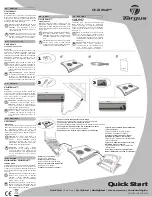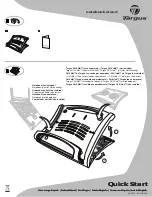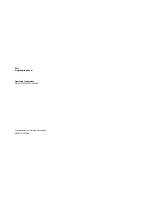
Using Windows Refresh for quick and easy recovery
When your computer is not working properly and you need to regain system stability, the Windows Refresh
option allows you to start fresh and keep what is important to you.
IMPORTANT:
Refresh removes any applications that were not originally installed on the system at the
factory. Any Windows 8 apps that came preinstalled on your computer and any that were purchased from the
Windows Store will be saved.
NOTE:
During Refresh, a list of removed traditional applications will be saved so that you have a quick way
to see what you might need to reinstall. See Help and Support for instructions on reinstalling traditional
applications. From the Start screen, type
help
, and then select
Help and Support
.
NOTE:
You may be prompted for your permission or password when using Refresh. See Help and Support
for more information. From the Start screen, type
help
, and then select
Help and Support
.
To start Refresh:
1.
On the Start screen, type
recover
, and then select
Refresh your PC without affecting your files
.
2.
Select
Get started
, and then follow the on-screen instructions.
Removing everything and reinstalling Windows
Sometimes you want to perform detailed reformatting of your computer, or you want to remove personal
information before you give away or recycle your computer. The process described in this section provides a
speedy, simple way to return the computer to its original state. This option removes all personal data, apps,
and settings from your computer, and reinstalls Windows.
IMPORTANT:
This option does not provide backups of your information. Before using this option, back up
any personal information you wish to retain.
You can initiate this option from the Start screen:
1.
On the Start screen, type
recover
, and then select
Remove everything and reinstall Windows
.
2.
Select
Get started
, and then follow the on-screen instructions.
Backing up data using File History
Recovery after a system failure is only as good as your most recent backup.
As you add photos, video, music, and other personal files, create a backup of your personal information.
Windows File History can be set to regularly and automatically back up files from libraries, desktop, contacts,
and favorites. If files are accidentally deleted from the hard drive and they can no longer be restored from
the Recycle Bin, or if files become corrupted, you can restore the files that you backed up using File History.
Restoring files is also useful if you ever choose to reset the computer by reinstalling Windows.
File History is not enabled by default, so you must turn it on as follows:
NOTE:
To enable File History and backup, you must connect using an optional external USB optical drive or
an optional external hard drive.
▲
On the Start screen, type
file history
, select
File History settings
, and then follow the on-screen
instructions.
56
Chapter 6 Backing up, restoring, and recovering
Содержание Classmate
Страница 4: ...iv Safety warning notice ...














































